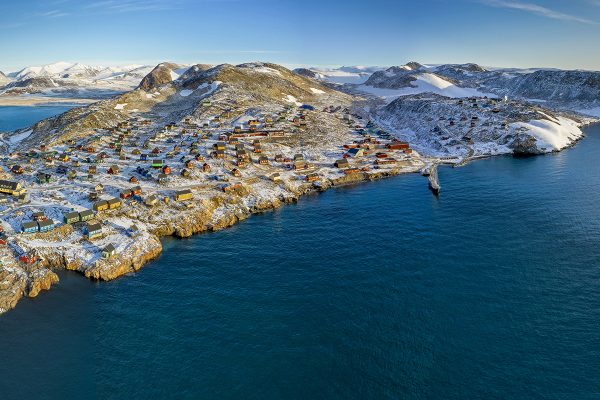Imagine finding a lost city, not in the depths of the jungle, but under layers of ice in a place as inhospitable as Greenland. In 2024, a NASA team managed to unintentionally identify one such hidden city.
During a routine flight in April 2024, a team of scientists flying over Greenland detected an anomalous signal under the snow. What initially appeared to be a simple radar error turned out to be one of the most fascinating revelations: Camp Century, a subway base that was built by the U.S. Army Corps of Engineers in 1959. This facility was located in one of the most extreme areas on the planet, where temperatures drop to minus 57 degrees Celsius and winds reached 193 km/h (120 mph).
How could this base go unnoticed for so long?
The base was abandoned in 1967 and was completely buried by up to 30 meters of snow and ice. In addition to the base structure, Camp Century housed a nuclear reactor, whose radioactive waste was also buried under the ice. But why was such an important military base left forgotten? The answers to this question may be closer than we think.
Today’s technological advances, such as NASA’s Airborne Aperture Synthetic Aperture Radar (UAVSAR), have enabled the detection of such structures. These discoveries would not have been possible decades ago. In this case, the UAVSAR was not searching for Camp Century, but rather its objective was to map the inner layers of ice in Greenland. However, the “lost city” emerged unexpectedly during radar testing.
A center for research on the Earth’s climate
Although Camp Century was once of great strategic importance during the Cold War, today its legacy goes beyond the military. The base left behind valuable soil and ice samples that scientists continue to analyze to better understand the Earth’s climate. In fact, the data collected at Camp Century have shed light on what the planet was like millions of years ago, when Greenland was a verdant landscape inhabited by mastodons and other species. This finding is also helping scientists gain valuable information for understanding current and future climate changes.

Radar technology and its impact on science
The amazing thing about this find is not just the hidden history of Camp Century, but the technology used to discover it. The UAVSAR is an example of the power of today’s technological innovations to open new doors in scientific research. Through this radar, researchers can accurately map the inner ice sheets, allowing for a detailed analysis of Greenland’s geological and climatic history.
This discovery marks a milestone in the history of polar exploration that highlights the crucial role of technology in modern science…. The ability to use advanced tools to explore what lies beneath the surface, non-invasively and accurately, is a testament to how technological innovation continues to open new frontiers for human knowledge.
Continue your professional education
The discovery in Greenland highlights the impact of advanced technology on science and exploration. Studying our Master in Strategic Management with a specialty in Telecommunications allows students to acquire the skills necessary to integrate emerging tools such as UAVSAR radar into diverse fields. This program prepares future professionals to lead change in a digital world. It also provides them with the skills to drive innovation in key sectors and advance their careers successfully.

